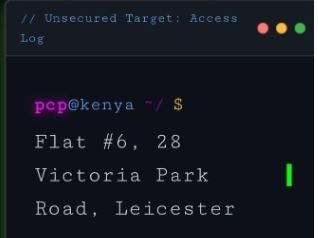Eleven farmers from six counties have received training on animal feed ration formulation.
The annual training had 11 participants from Kiambu, Kajiado, Narok, Meru, Machakos and Nairobi. They were the 16th cohort drawn from the private sector and from enterprises put together and supported by the Kenya Climate Innovation Centre.
Out of the 11, five were women.
The five-day training was conducted by the Kenya Industrial Research and Development Institute.
The farmers were trained on how to make animal feed, select the raw materials to make the animal most productive, process the feed to a form that is acceptable to the animal, and identify any challenges in terms of quality of the feed so as to perform corrective measures.
The training was tailored towards making sure that the feed industry is performing well and the quality of the feeds from the sector meets Kenya Bureau of Standards certification.
It covered a range of topics such as animal nutrition, aspects of feed stuffs available in the country, their characteristics, and their toxic factors.
They also looked at feed processing, formulation, equipment and machinery, Kebs standardisation, as well as a technology demonstration which constituted a computer-based ration formulation training.
KIRDI assistant director for technology transfer and extension services Ingrid Wekesa said that the farmers managed to formulate feeds for pigs, dairy cattle, rabbits, pets such as horses, cats and dogs, fish, poultry, ducks and turkey.
She said some of the farmers who were part of the training were working with insect feed such as the Black Soldier Fly (BSF).
This, she said, was an opportunity for the farmers to learn how to add value to the BSF and present it as a component of feed formulation to replace Silver Cyprinid (omena) which is now becoming scarce.
“We wanted to help the farmers understand that formulation is not just about mixing,” Wekesa said.
“It is actually understanding what the animal needs so that it is productive, aspects of quality feed, regulations and standards around production, type of equipment that is needed and challenges that can be surmounted easily.”
Wekesa also said once they understood the nutrition and toxic factors that come with feed formulation, the farmers were trained on how to input such data in a computer system.
This, she said, depended on the raw material that was available.
“If you consider cost and pricing, computer-based ration formulation is least cost based which allows them to go into the market where they are able to benchmark and price their feed,” she said.
“With the information in a computer system, a farmer is able to formulate feed and get it at least cost so as to maximise on the outputs acquired from the field as well as sustenance of the animal so that it is more productive.”
The farmers were also trained on how to assess local, regional and international markets and formulate for each niche as well as equally come up with alternative animal feed.
Wekesa said that some of the farmers had already set up factories for feed formulation but lacked the technological know-how.
She also noted that some of the farmers had a narrow scope of what feed formulation entailed.
“I believe that we have achieved our objectives from this training and that each farmer has come out differently,” Wekesa said.
Different Collective co-founder Sandra Kimathi said that as someone who partly deals with waste management, they have a lot of challenges when it comes to omena and other proteins as feeds are becoming very expensive for animals such as dairy cattle andpoultry.
“Together with different farmers, we work on waste management and how we can change it to feeds for our animals and fertiliser for our farms,” she said.
“Through this training, since we already deal with the BSF, we learnt how we can formulate using the insects as they have high protein. To us, this was a way to substitute and help farmers find a solution to the omena and protein problem.”
Kimathi’s company is an IT firm that is trying to solve farming problems through technology.
When they started the company in 2017, she said she realised that feed was becoming an expensive endeavour for farmers.
“Most of the poultry products we have, for example, we are importing and the reason behind it is feeds,” Kimathi said.
“When you look at the feed formulation, the high protein content is what is making the price go up.”
She added that farmers need to be encouraged and sensitised on treating all feed as important so that they can give high yield.
“Through this we can solve issues to do with aflatoxin, low energy in feeds, reduce the cost of production and also do away with hunger."
Yammie Fresh director Zack Kuria, also a farmer from Kiambu, said that 60 per cent of his farm operations are dependent on getting the feeds right.
“We usually offer farmers in the village animal feed that is as good as what other companies produce but at a price that is 30 per cent cheaper,” he said.
“If we are able to fix our feed, we make sure that we are competitive in pricing as well as with the best quality. Feed is a key component for us.”
Located in Kikuyu, Yammie Fresh initially dealt with yoghurt production but later metamorphosed to animal feed production, supporting farmers and practicing circular farming which includes pigs, dairy cattle and poultry.
Kuria said prior to the training, he and his team of employed youth and women used to record data from the farm and input the information in a computer just for reference purposes.
“We didn’t know that we could use an Excel sheet to solve and minimise costs when it came to animal feed. It was like we had a vehicle but didn’t know how to drive it,” he said.
“Through this training, I had targeted to come and gain knowledge on minimising costs and drive up the quality of our feed.”
Kuria said there is a lot of information that farmers can get from KIRDI.
“They offer training for you for things that are already available for you. I learnt a lot of transformational things that will make our farm returns better as well as position ourselves for growth and pass this information to other farmers in the village,” he said.
KIRDI provides common manufacturing facilities, the trained farmers have been granted access go in, process and then leave with finished products that would have acquired the KEBS mark through an advisory team from the institute.
As part of the evaluation process, the farmers also received training manuals for reference and will be sending in three different formulation samples to KIRDI for free analysis.
“Every three months we will be reaching out to them just to know where they are and address any challenges they have,” Wekesa said.
KIRDI plans to host the 17th cohort for those practicing feedlot for the purposes of feed production in September.
















